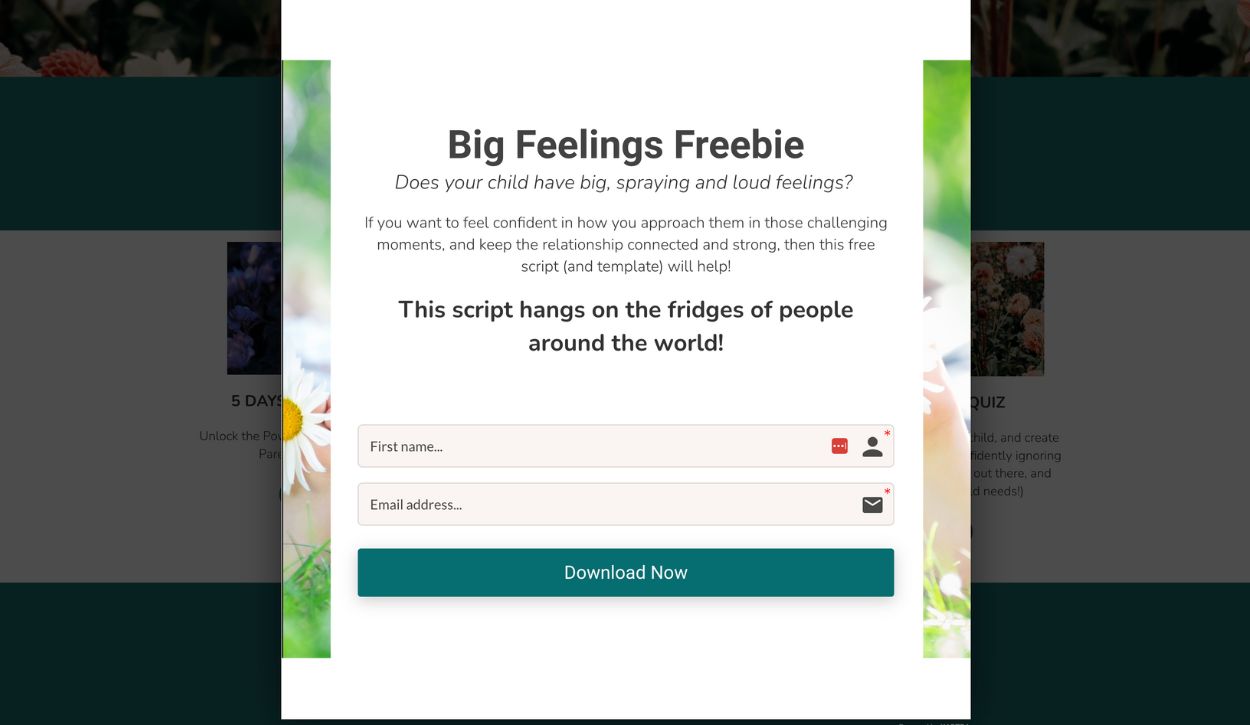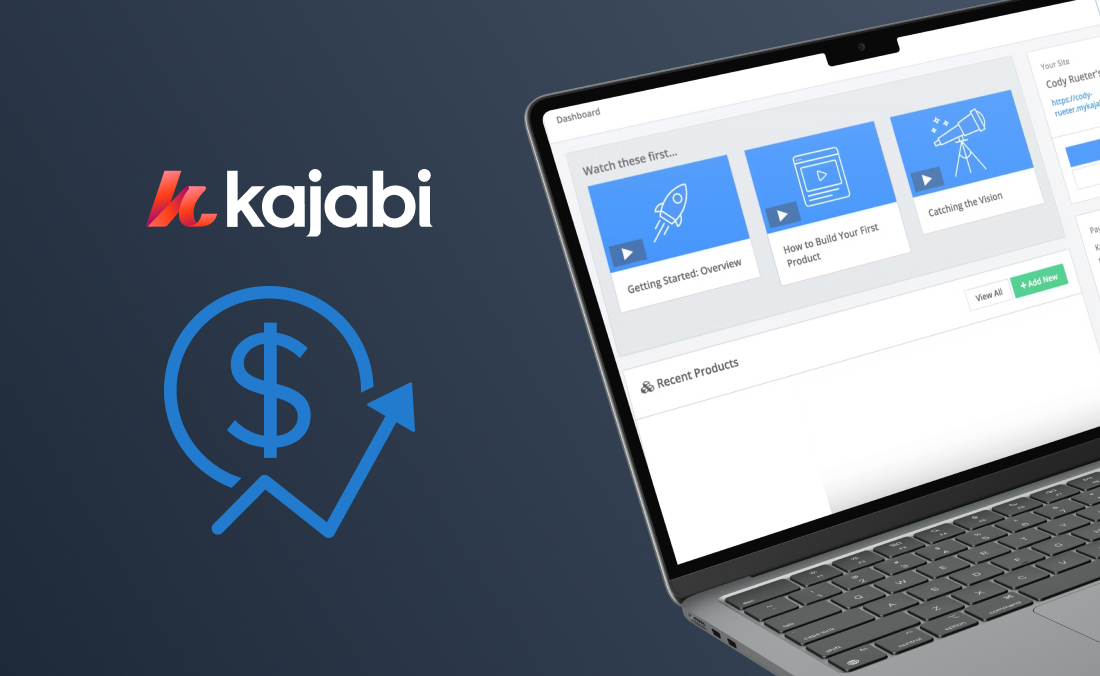If you’re challenged by the marketing side of running an online business, you’re not alone. Many content creators are unsure how to successfully promote their product, whether it’s a new course or a published course that isn’t gaining traction.
The good news is that marketing an online course is a lot more intuitive than you might think — and there is an abundance of marketing tools that streamline your to-do list. Here at Kartra, we’re passionate about giving online course creators everything they need to grow a sustainable online business around their expertise.
Read on for our top marketing advice that will put you ahead of the competition!
How to market your online course
Here are 26 practical strategies to help you boost brand awareness for your online course and increase course sign-ups.
1. Build trust and loyalty with a cohesive brand
Good marketing doesn’t impose on others — it presents solutions to real problems and builds trust. This principle is especially important to remember when your product isn’t consumable. Your customers are investing their resources in something they expect to improve their lives! In order to make that purchase decision, they need to trust you.
To build a successful, sustainable business from course creation, you can’t think in terms of the product itself. You need an online community that believes in the value of what you have to say.
For course creators, the best way to build trust and loyalty with your target audience is to create high-quality content as part of a long-term, organic marketing strategy. Develop a cohesive brand that resonates with your audience and fosters a community of loyal followers. Ensure that every interaction with your brand, from social media to course content, reinforces your brand values and builds long-term relationships with your customers.
2. Create a comprehensive user profile
Before you market your course, create a detailed user profile that includes your audience’s pain points, frequently asked questions, and motivations for seeking out online learning. Understanding who your target users are will help you tailor your marketing efforts more effectively and ensure that you’re addressing their specific needs. This approach will make your messaging more impactful and increase the likelihood of converting leads into students.
3. Develop a targeted social media strategy
Social media is a powerful tool for building your brand and driving engagement with your course. Focus on a targeted approach by identifying the platforms where your audience spends the most time. Be consistent in your messaging and interactions, and use these channels to foster a strong community around your brand. Balance organic content with occasional paid promotions to maximize reach.
Forums such as Quora discussions or Facebook groups are other great places to share your knowledge and learn about your customer base. Just be sure to add value to conversations and don’t jump too quickly to promoting a product (some groups don’t allow selling at all!).
4. Leverage paid advertising and retargeting
Sometimes, you need a quick way to access new audiences and drive sales while working on long-term, organic strategies. Using paid ads on digital marketing channels can help you reach new audiences quickly while retargeting strategies allow you to re-engage users who have already shown interest in your course.
For example, Facebook ads, LinkedIn ads, or Google Ads can be great ways to get people interested in what you have to say. Develop a comprehensive paid marketing plan that includes both broad and targeted campaigns to drive awareness and conversions effectively.
5. Inspire loyalty with a recognizable brand
One of the fundamental principles of good marketing is to build a cohesive brand image — not just a helpful product. Course creators need their users to have a “tribe mentality” — a long-term commitment to the brand as a whole instead of a short-term commitment to a particular offering.
This emphasis on relationships instead of transactions helps to ensure your brand grows sustainably instead of building sudden interest that tapers off!
Focus on making your brand consistent, different, and appealing to your target audience.
6. Nurture your leads and continuously optimize
One of the most common—and detrimental—marketing mistakes is expecting isolated marketing tactics to convince someone to buy immediately.
Most people take a long and winding path before making a purchase — especially if they’re investing in their education and personal development. This concept is called a buyer journey, and businesses build sales funnels to move people through each stage. You’ll be ahead of the pack if you market your course with this principle in mind.
Follwing a sales funnel is essential for guiding potential students through the decision-making process. However, it’s equally important to measure and analyze each step of this journey. Use data to refine your approach, ensuring that your marketing efforts are not only nurturing leads effectively but also continuously improving based on real-world feedback.

Online business expert Louise Henry delivers a weekly newsletter to her contact list
7. Choose a marketing platform that makes it easy
Kartra is designed so you can build your online course business from the ground up without stitching together software programs as you grow. Instead, you have access to all the features you need — all in one place — for every step of the journey.
Kartra’s online course platform equips entrepreneurs with all the most important tools to create, market, and scale their business:
- Landing page and form templates
- Email templates
- Sales funnel builder
- Membership software
- Video and webinar hosting
- Affiliate marketing
- And much more
8. Leverage the power of video marketing
In today’s digital landscape, video content is king. Create engaging video content to promote your course, such as:
- Course previews or teasers
- Student testimonials
- Behind-the-scenes glimpses of your course creation process
- Short, valuable tutorials related to your course topic
Share these videos on platforms like YouTube, TikTok, and Instagram Reels to reach a wider audience and give potential customers a taste of your teaching style.
9. Utilize customer testimonials and success stories
Nothing sells a course better than the success of your students. Use testimonials and success stories prominently on your website, social media, and marketing materials. Consider creating case studies that dive deeper into how your course has helped specific students achieve their goals.
These reviews and stories act as social proof and can improve your conversion rates dramatically.
10. Offer a free mini course
Offer potential students a free trial or mini-course to give them a taste of your course content. This allows them to experience your teaching style and course quality firsthand, increasing their confidence in purchasing your full course.
11. Create a referral program
Encourage your satisfied students to spread the word about your course by implementing a referral program. Offer incentives such as discounts on future courses or exclusive content for students who successfully refer new enrollees.
12. Use guest posting to drive qualified traffic
Guest posting is a highly effective way to drive qualified traffic to your course website. By contributing valuable content to reputable blogs and websites in your niche, you can reach a broader audience and establish yourself as an authority in your field. Ensure that your guest posts are well-crafted and provide genuine value to the readers, with a clear call-to-action that directs them to your course or a related lead magnet.
13. Collaborate with influencers and thought leaders
Partner with influencers and thought leaders in your niche to expand your reach and credibility. This could involve guest appearances on podcasts, collaborative webinars, or social media takeovers.
14. Engage in content partnerships
Collaborate with complementary businesses or course creators to cross-promote each other’s offerings. Content partnerships can significantly expand your audience reach and add value to your marketing efforts. Here’s how to maximize these collaborations:
- Co-create content: Work together to produce valuable resources, such as eBooks, webinars, or blog series, that benefit both audiences. Co-created content can provide a fresh perspective and tap into new areas of expertise.
- Feature each other in newsletters: Include mentions, guest articles, or promotions in each other’s email newsletters. This can expose your course to a highly engaged audience and drive more qualified leads.
- Bundle courses for special promotions: Partner with other course creators to offer bundled deals or complementary courses at a discounted rate. This not only increases your value proposition but also encourages cross-promotion between brands.
- Collaborative challenges or events: Create joint challenges, summits, or events that engage both audiences. Collaborative events can generate excitement, increase brand visibility, and lead to higher conversion rates.
15. Host virtual summits or conferences
Organize virtual events that bring together experts in your field, including yourself. These events can showcase your expertise, build your network, and generate leads for your course.
16. Use SEO to rank for valuable keywords
Search engine optimization (SEO) is a powerful strategy for driving organic traffic to your course website. By optimizing your content to rank for valuable keywords that your target audience is searching for, you can attract a steady stream of potential students. Start by conducting keyword research to identify relevant terms with a good search volume and low competition. Then, create high-quality content that addresses those keywords naturally and effectively. Additionally, ensure your website is technically optimized, with fast loading times, mobile responsiveness, and proper meta tags.

Parenting coach Myla Leinweber offers free parenting resources to website visitors
17. Utilize retargeting strategies
Implement retargeting ads to re-engage visitors who have shown interest in your course but haven’t yet enrolled. These ads can remind potential students about your course and offer additional value or incentives to encourage enrollment.
How to work smarter, not harder
As content becomes a more significant part of your online course marketing strategy, don’t forget to repurpose resources. You might have more content to work with than you think!
- Convert a webinar into a downloadable whitepaper
- Turn a live Q&A into a podcast episode
- Use content from blog posts in your email newsletter
- Share video content from your course on your YouTube channel
- Turn a course module into a free mini-course lead magnet
Producing content across multiple digital marketing channels is far easier when you reuse the work you’ve already done. And your library of useful content will only expand as your business grows!
18. Sponsor a relevant newsletter
Sponsoring a relevant newsletter is an excellent way to reach a targeted audience that is already interested in your niche. Find newsletters with a strong following in your industry and offer sponsorships that include a mention or feature of your course. This can help you gain visibility with a new, highly engaged audience and drive traffic to your course landing page.
19. Offer exclusive bonuses or limited-time promotions
Create a sense of urgency and added value by offering exclusive bonuses or limited-time promotions. This could include:
- Early-bird discounts
- Bonus modules or resources for the first X enrollees
- Special bundled offers with complementary courses or products
These incentives can help motivate potential students to take action sooner rather than later, increasing your course enrollments during key promotional periods.
20. Build a strong social media presence
Build and maintain an active presence on social media platforms where your target audience spends time. Share valuable content, engage with followers, and use platform-specific features (like Instagram Stories or LinkedIn articles) to showcase your expertise and promote your course. Consistency is key in social media marketing, so make sure to post regularly and interact with your audience to build a loyal community around your brand.
21. Create a sales funnel
One of the most common — and detrimental — marketing mistakes is expecting isolated marketing tactics to convince someone to buy right then and there.
When was the last time you bought something immediately after watching a commercial from a brand you’d never heard of before?
Most people take a long and winding path before they make a purchase — especially if they’re investing in their own education and personal development.
This concept is called a buyer journey, and businesses build sales funnels to move people through each stage. You’ll be ahead of the pack if you market your course with this principle in mind.

How to build a course sales funnel
Start with the bottom of the funnel — developing key assets like your course sales page and checkout page. These are the resources your customers need to enroll. Next, create resources for people who need more information and more persuading — such as a program overview and a success page with testimonials and other social proof.
Once those bottom-of-funnel assets are established, you’ll be prepared to turn your attention lead generation — educating through valuable content and perhaps running ads as needed.
You can also apply the sales funnel concept to individual marketing campaigns, such as an email sequence that starts with educational content and ends with a direct call-to-action to purchase your course.
Setting up sales funnels is another step you don’t have to do from scratch! Kartra users have access to a sales funnel builder and done-for-you templates that take the legwork out of designing marketing campaigns.
22. Implement an affiliate marketing program
Expand on the affiliate marketing concept by creating a comprehensive program. Provide affiliates with marketing materials, tracking links, and competitive commission rates. This can significantly extend your reach and bring in new students through trusted recommendations.
23. Provide excellent customer support
Offer top-notch customer support to both prospective and current students. Respond promptly to inquiries, address concerns, and go above and beyond to ensure student satisfaction. Positive word-of-mouth from happy students can be a powerful marketing tool.
24. Continuously update and improve your course
Regularly update your course content to keep it fresh and relevant. Announce these updates to your audience, as it demonstrates your commitment to providing ongoing value and can encourage new enrollments as well as upsells to existing students.
25. Engage in community building
Create and nurture a community around your course topic. This could be through:
- A private Facebook group for students and interested parties
- A forum on your website
- Regular live Q&A sessions or office hours
Building a strong community not only adds value for your current students but also attracts new ones as they see the ongoing support and networking opportunities your course provides.
26. Measure and analyze your marketing efforts
Implement robust analytics to track the performance of your marketing efforts. Use tools like Google Analytics, social media insights, and email marketing metrics to understand:
- Which marketing campaigns are doing best at lead generation
- What content resonates best with your email list
- The demographics of your social media followers
- How students are moving through your sales funnel
- How well are your course sales pages performing
Regularly review these metrics and use the insights to refine your marketing strategy. This data-driven approach ensures that you’re focusing your efforts on the most effective tactics and continuously improving your marketing ROI.…and there’s more!
Discover the features course creators love about Kartra’s all-in-one platform


